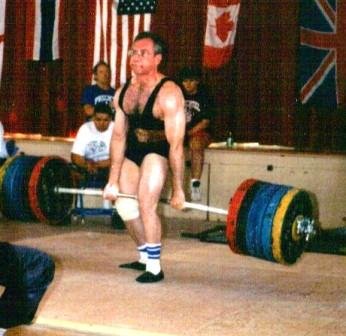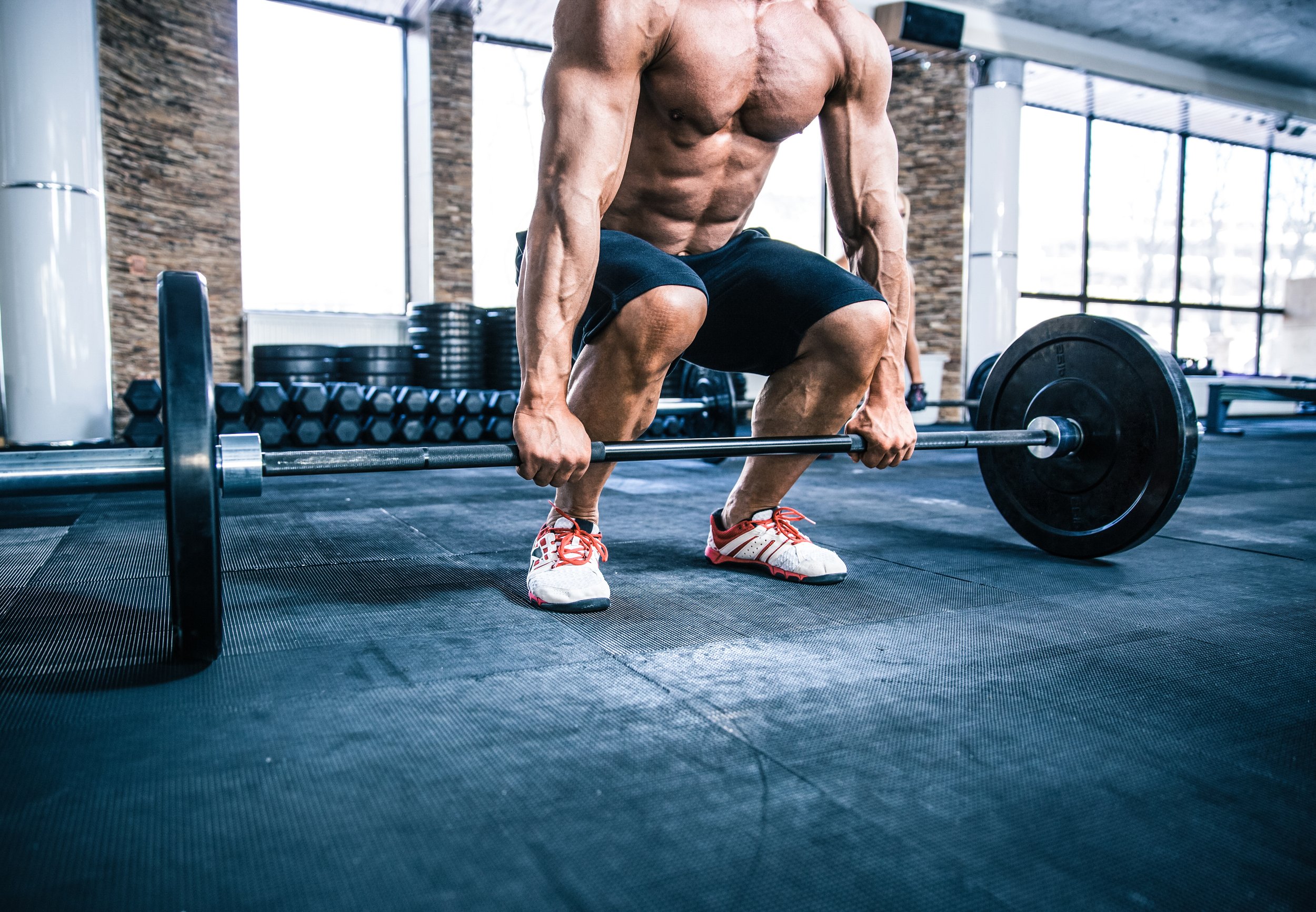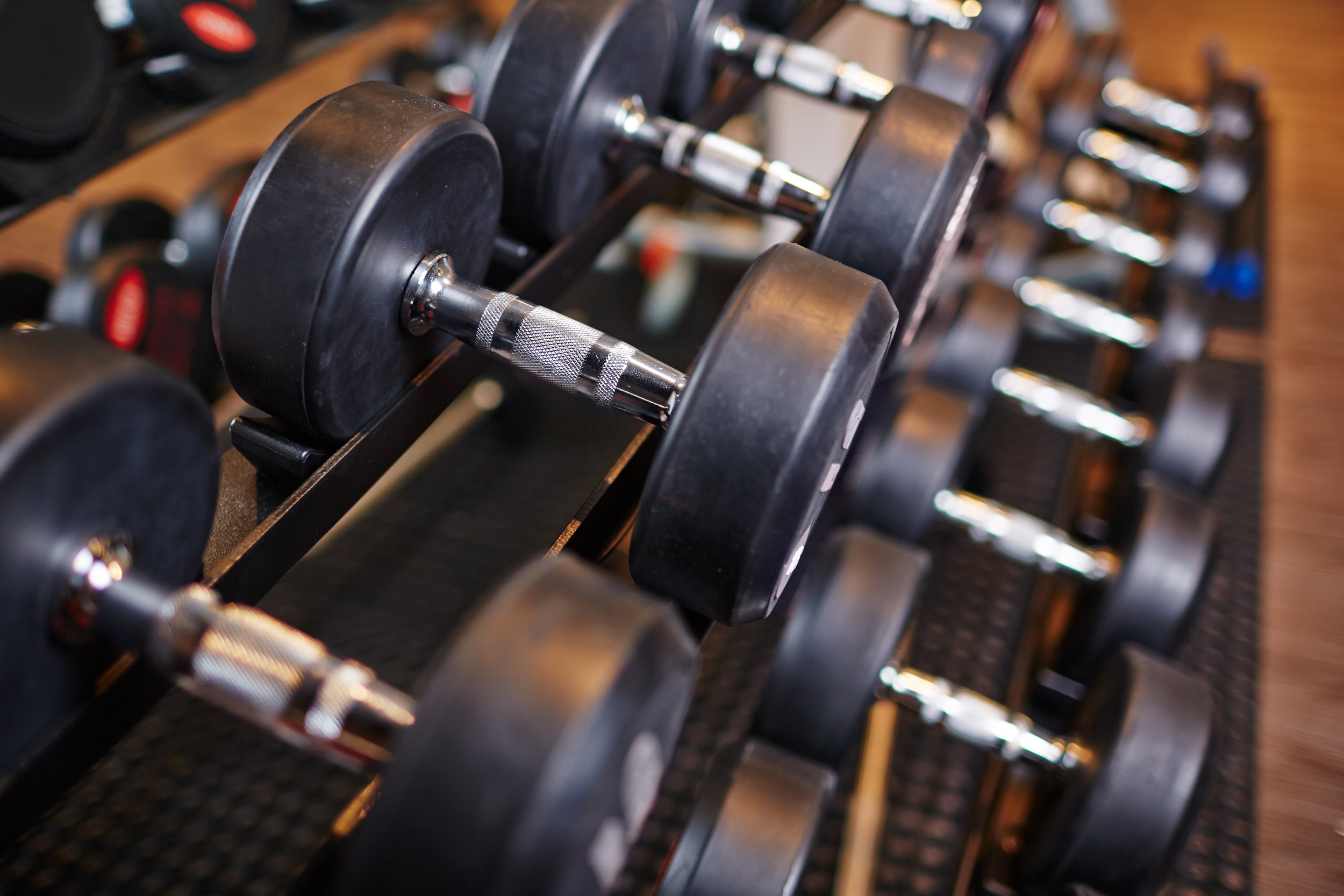What is the Jefferson deadlift?
Takeaway Points:
The Jefferson deadlift is an interesting deadlift variation which has some unique advantages.
Unfortunately, it also doesn’t have as much usage in current strength sports, relegating it mostly to the status of a niche exercise which won’t be for everyone.
What is the Jefferson deadlift?
Bob Hirsh Jefferson deadlifting 702 @ 176lb bodyweight. Image credit to David Dellanave.
The jefferson deadlift is a deadlift variation in which you stand over the bar with one foot on each side, one hand in front, and one hand behind, and lift the barbell with the bar between your legs. This movement requires you to get a bit deeper into the lift, and accordingly may target knee extension (the quads) a bit more than the typical deadlift, which is more focused on back extension.
This lift is named after old time strongman Charles Jefferson, who I assume used it a lot, or whatever.
More recently, the Jefferson deadlift had some minor re-popularization due to David Dellanave, a big fan and advocate of its use.
Why even do this???
This is the much bigger question. Any exercise can have both benefits and drawbacks, and in particular, needs to be compared up against similar exercises that give similar benefits. Namely - the traditional barbell deadlift. Both the Jefferson deadlift and the traditional deadlift will work similar muscle groups. So why select one or the other?
Traditional deadlift
Great for powerlifting and strongman
Some carryover to Olympic weightlifting and CrossFit
Not so great for building muscle mass due to the high levels of fatigue involved
Jefferson deadlift
Not used by any lifting sport
More of a unilateral exercise - you need to alternate which leg/arm is forward, and accordingly it trains one side or the other at a time
Not so great for building muscle mass due to the high levels of fatigue involved
In short, it seems like the Jefferson deadlift is not actually USEFUL for very much. It’s a strength focused movement that doesn’t have much carryover to any existing strength sport, meaning that at the very least, it’s not ever going to be particularly relevant. Unless or until it becomes enshrined as a common movement in some strength sport, it’s unlikely to ever get much attention.
However, I’ve been maybe a little mean in the above analysis - there are some things I think that the lift can do uniquely well.
Some real benefits to the lift
While a Jefferson deadlift may not be a good bodybuilding movement, and it’s primarily a strength movement without a sport, there are some places where it could be useful.
Some strongman movements and events may still benefit from it. For example, some lifting stones like the Dinnie stones (pictured below) are designed to be picked up in a way that mimics something similar to the Jefferson deadlift, with one in front and one behind. You could train with the Jefferson deadlift to prepare yourself for an event like this, if it were to come up, and the added specificity of the movement would be beneficial in building strength for this task.
Dinnie stones. Image credit wikipedia.
Leigh Holland-Keen lifting the Dinnie stones. Image credit The Guardian.
Anecdotally, I’ve known coaches (including David Dellanave as mentioned above) who swear by it as a useful core strength training movement, especially for folks with side-to-side imbalances. The deadlift is a bilateral exercise, which means that it trains both sides at once. For folks who have side to side imbalances, the typical recommendation is to include some unilateral work - exercises which work each side individually - so that both sides can develop evenly. For example, a one arm row targets one arm at a time, or a lunge targets one leg at a time.
If you wanted to train the deadlift unilaterally, the best approach is typically to do a kickstand deadlift - a deadlift with most of the weight on one leg, and the other leg placed slightly behind with the toes resting gently on the ground for balance - or a single leg deadlift, with the back leg entirely in the air and off the ground. But, this can be awkward for some, and so I can see why, if you needed a unilateral deadlift, the Jefferson deadlift would be a better alternative. It’s much more stable, while still allowing you to get strong, move a lot of weight, and preferentially target one side at a time. I could imagine using this movement for folks who are looking to build strength in the primary deadlift, while still overcoming side to side muscular imbalances. They could use this in their training for a while, then switch over to a primary deadlift for competition phases when they work through their imbalances.
Is it worth doing?
For most people, probably not. The standard deadlift has more application to most strength sports, and if you’re training for size, traditional deadlifting is probably not a great use of your time anyway. However, if you’re not training for any particular sport, and just wanted to get stronger, you could imagine someone who does the Jefferson deadlift for fun and the enjoyment of a bit of novelty along the way. Or, as mentioned above, you may be someone who has very niche training goals, and it can be beneficial in those situations.
Unfortunately, this will always probably be a niche lift that doesn’t get the love that it deserves.
About Adam Fisher
Adam is an experienced fitness coach and blogger who's been blogging and coaching since 2012, and lifting since 2006. He's written for numerous major health publications, including Personal Trainer Development Center, T-Nation, Bodybuilding.com, Fitocracy, and Juggernaut Training Systems.
During that time he has coached thousands of individuals of all levels of fitness, including competitive powerlifters and older exercisers regaining the strength to walk up a flight of stairs. His own training revolves around bodybuilding and powerlifting, in which he’s competed.
Adam writes about fitness, health, science, philosophy, personal finance, self-improvement, productivity, the good life, and everything else that interests him. When he's not writing or lifting, he's usually hanging out with his cats or feeding his video game addiction.
Follow Adam on Facebook or Twitter, or subscribe to our mailing list, if you liked this post and want to say hello!
Enjoy this post? Share the gains!
Ready to be your best self? Check out the Better book series, or download the sample chapters by signing up for our mailing list. Signing up for the mailing list also gets you two free exercise programs: GAINS, a well-rounded program for beginners, and Deadlift Every Day, an elite program for maximizing your strength with high frequency deadlifting.
Interested in coaching to maximize your results? Inquire here.
Some of the links in this post may be affiliate links. For more info, check out my affiliate disclosure.










